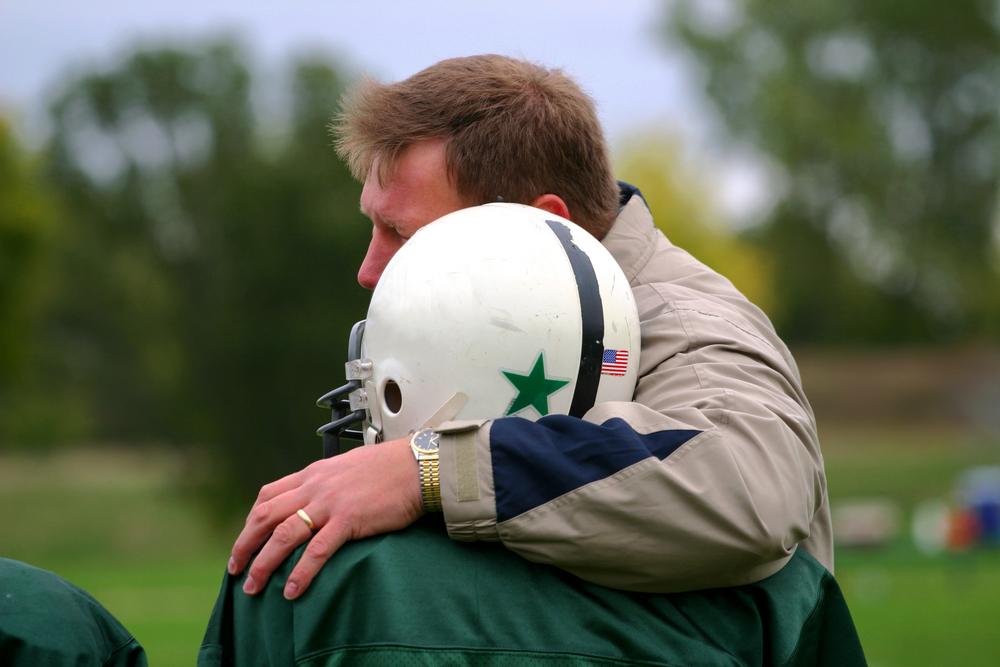 As a coach, you witness a lot of sport-related decisions and coaching strategies: You may see other coaches in your area encouraging athletes to specialize in one sport or to train year-round with no breaks. You may also experience parents who are dreaming of college scholarships and professional sport careers. And then there are the athletes themselves, who may have their own reasons for playing and internal pressures to succeed.
As a coach, you witness a lot of sport-related decisions and coaching strategies: You may see other coaches in your area encouraging athletes to specialize in one sport or to train year-round with no breaks. You may also experience parents who are dreaming of college scholarships and professional sport careers. And then there are the athletes themselves, who may have their own reasons for playing and internal pressures to succeed.
But a smart coach knows that a balanced approach to sport is critical for athlete health, longevity, and even success on the field. Here, TrueSport Expert Ian Goldberg, coach, sport dad, and founder and CEO of iSport360, reflects on how coaches can encourage balance in youths sports.
Get Over FOMO
Fear of missing out—colloquially known as FOMO—leads a lot of coaches to make decisions that aren’t necessarily in the best interests of their team or the individual athletes, says Goldberg. The FOMO may be coming from hearing what other coaches are doing with their athletes: extra tournaments, travel-heavy schedules, or expensive private skills training. Presssure from FOMO can also be coming from the athletes’ parents, who see what other teams are doing and are afraid their kids are missing out. Social media makes this even tougher, since coaches, parents, and athletes are no longer comparing their programs to other local programs but instead have a global view of the ‘highlight reels’ of other teams.
It’s impossible to keep up with, says Goldberg. And the best thing that you can do for your athletes is to help them understand that no matter how many extras they add, there will always be something else out there. They’re chasing an impossible standard, and rather than helping them get ahead, it’s costing them in the long run.
Bust the 10,000 Hour Myth
“Multi-sport athletes are the most successful athletes out there,” says Goldberg. “Every college football coach will tell you that the athletes they want to recruit for their football teams have played multiple sports in high school. Many were three letter athletes, because that’s what makes a young athlete the most well rounded, strongest, balanced, fit player.”
Unfortunately, the “10,000 hour” concept popularized by nonfiction author Malcolm Gladwell has made many coaches, parents, and athletes believe that a singular focus is the only way to find success. According to the “10,000 hour” concept, 10,000 hours of deliberate practice is what it takes to become an expert. But that doesn’t mean a seven-year-old should be spending 10 hours per week working on their soccer skills in order to speed up the process of becoming a soccer superstar. “In sports, especially at a young age, it’s actually better to train multiple sports and practice moving your body in different ways,” says Goldberg. “But there are the parents and coaches who are still thinking along those Malcolm Gladwell lines and it’s hurting our athletes.”
Add in Free Play
“We know from the research that kids want to play sports primarily because it’s fun and they have friends there,” says Goldberg. “But coaches and parents tend to be focused on winning and success and other outcomes rather than fun. It’s obvious that we have taken a lot of the fun out of our kids’ sports.”
So even within your practices, make space for athletes to simply play and have fun, says Goldberg. Youth sports used to include much more ‘free play,’ where athletes were the ones organizing into small teams, creating new games with different rules, and scoring themselves. Now, Goldberg says, many kids have lost the ability to simply enjoy a few minutes of free play on the field, but it’s a valuable way that a coach can inject fun into practice while also giving athletes a chance to experiment with different tactics and even work on their leadership skills in the process.
Shut the Team Down
It may be difficult to consider taking a full offseason for your team if the other coaches in the area play year-round, or you’re being pressured by parents to keep it going. But Goldberg encourages coaches to get their players to play multiple sports—and this only happens if there’s an offseason. “It takes courage for a coach to say that they’re shutting down for an offseason,” he says. “There’s the fear that athletes will find other teams, or even that they’ll play another sport and not come back. But if that’s what you’re afraid of, you need to consider what your team is offering. Why are you afraid the athletes will leave? What aren’t you providing for them?”
In fact, encouraging athletes to try other sports often results in the athletes coming back next season fitter and more refreshed and eager to play. “I want athletes on my team who are doing other sports,” says Goldberg. “I see a huge boost in fitness from it: An athlete who does swimming in the winter may need to refocus on her soccer skills in the spring, but her fitness and overall strength will be much higher than if she’d done soccer year-round.”
Set Expectations with Parents and Athletes
 “When I started coaching my daughter, by the time she was seven years old and starting to play travel soccer, I saw a real breakdown between myself as the coach on the team and the parents of the kids,” says Goldberg. He quickly realized that in order to successfully coach happy, healthy athletes, he needed to set boundaries with parents. It was key to set expectations for the amount of travel the team would do—Goldberg maintains a ‘no plane travel’ rule for his soccer team—as well as to establish boundaries around communication. Can parents text, or should they email? What is expected of parents during competitions, as they watch from the sidelines?
“When I started coaching my daughter, by the time she was seven years old and starting to play travel soccer, I saw a real breakdown between myself as the coach on the team and the parents of the kids,” says Goldberg. He quickly realized that in order to successfully coach happy, healthy athletes, he needed to set boundaries with parents. It was key to set expectations for the amount of travel the team would do—Goldberg maintains a ‘no plane travel’ rule for his soccer team—as well as to establish boundaries around communication. Can parents text, or should they email? What is expected of parents during competitions, as they watch from the sidelines?
Travel teams in particular need boundaries, since it’s easy to get swept up by a travel schedule that goes from a couple of weekends away in a season to a three-month stretch of plane travel and long drives almost every weekend. And Goldberg says that there are benefits to traveling as a team: The bonding that takes place when athletes are staying together in a hotel and spending time together can create lifelong memories. But it shouldn’t become the norm for most teams. “I don’t believe most teams need to spend thousands of dollars to get hotels, rental cars, and flights unless they are at such a high level that there’s just no good competition in the local area,” says Goldberg. “Unless your team is winning everything by such a massive margin that the kids are bored playing, you don’t need to travel every weekend.”
Encourage the Multi-Sport Approach
The most important thing you can do as a coach is to promote a multi-sport approach that allows athletes to explore other ways of playing and moving. Specifically, push your athletes to consider seemingly unrelated sports. Goldberg is a fan of sports that make athletes better in any other sport, such as cycling, track, swimming, and martial arts. “It would be silly for a coach to tell an athlete on their team to drop martial arts, especially in the offseason. Martial arts like Jiu Jitsu just make you stronger, more confident, more disciplined, and a better all-around athlete. Something like cycling helps develop the aerobic engine, while track makes your athlete a better runner.”
These individual sports can be especially beneficial to an athlete who’s used to team sports. “There’s something really great about being part of a team, but to truly be challenged and push yourself, you need to try those individual sports too,” says Goldberg. “It’s great for athletes to have the opportunity to experience a sport where they have no one to blame but themselves when they lose and no one else to credit when they win. And that’s a great skill to learn.”
The reason coaches often are slow to suggest this approach, Goldberg believes, comes down to fear. “I think the problem is coaches are nervous that they’re going to lose their player to another major sport,” he says. “So, if the kid on your soccer team says they’re going to play baseball this season, the coach worries that the baseball coach will ask the athlete to play year-round, so they say no.”
But if you’ve created a thriving, fun environment on your team, it’s also likely that your athlete will come back when baseball season is over… and be stronger from their time there.
_________________________
Takeaway
As a coach, you can fight the narrative that youth athletes should be specializing in one sport, playing year-round, and receiving specialized training in order to succeed. Try to help both athletes and parents understand that the research is clear that the winning approach is a multi-sport one that prioritizes rest and allows athletes to develop at their own pace.



